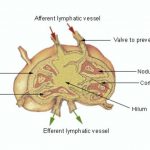 A group of scientists are seeking to develop a drug against the virus using lymph nodes since they store immune system of humans.
A group of scientists are seeking to develop a drug against the virus using lymph nodes since they store immune system of humans.
The immune system cells found in lymph nodes could help develop a vaccine against HIV, according to a study by the Center for Research in Infectious Diseases (CIENI).
Dr. Pearl River Mariana Estrada indicated that they precisely know the reaction of the immune system against the Human Immunodeficiency Virus (HIV) and they are creating a vaccine against the virus.
According to him only five percent of the cells that protect us is in the blood. The rest of the cells are in the lymphoid tissue, many of them in the lymph nodes.
In an interview with the News Agency of the National Council of Science and Technology (CONACYT), River Estrada mentioned that it was found that HIV hides inside cells of the lymph nodes, where it replicates even if the patient is in treatment.
Previous studies show that the immune response of lymph nodes is the most associated with the protection of a vaccine.
The study at CIENI characterized all cells which can be found in lymph node, dendritic cells, T cells (CD4, CD8 and regulatory), NK cells and B cells
Within lymph nodes are follicular T cells, B lymphocyte populations and dendritic cells, which are only in that tissue.
Also, follicular T cells, as well as all other CD4, are affected by HIV and used as virus reservoir in the lymphatics.
The researcher said that because of their anatomy, lymph nodes leave cells organized at specific sites (microanatomy), which allows closeness and contact between populations of cells that need to interact with each other.
Once they encounter a pathogen, the cells are moving from a micro-region to another and create temporary contacts with their neighbors. It is these contacts that allow adaptive immunity between T cells and B cells are generated, which are the ones producing antibodies.
The vaccine would be developed through the concepts of innate and adaptive immune responses, the first occurs immediately when the cells recognize specific patterns on pathogens.
However, agents are shared by groups of pathogens, ie, the characteristic of all bacteria or fungi or viruses are not species specific, he explained. After recognition, the adaptive response generates immunological memory again when entering the body; the organism is recognized by a group of specific cells of this pathogen to attack it.
The researchers from CIENI are collaborating with research laboratories in the US (universities of Pennsylvania and Boston) and elsewhere, as well as the National Institute of Health (NIH).
Source: Science News Hub

















